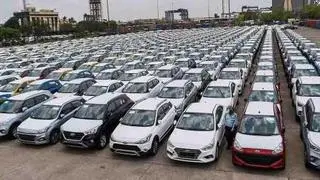L&T, the Indian engineering and construction major, said it would invest $ four billion in the green-hydrogen sector. Many other companies, such as ACME and JSW have made similar announcements. So, a big hype around green hydrogen is building up in the country.
So far, 49 projects totalling 3.5 million tonnes of green hydrogen and 19 projects for electrolyser manufacture have been announced.
It is time for a reality check. The big question to all these companies is, where will you sell the green hydrogen?
The world can be divided (only) into two markets – domestic and international.
Domestic Market
The domestic market consumers are mainly refineries and fertiliser companies, steel and other sectors may come in as consumers later. Today, the refiners and fertiliser manufacturers get grey hydrogen at around $ 2.5 a kg, if not cheaper. What is the incentive for them to buy green hydrogen that costs not less than $ 4 a kg today? The government initially said that it would bring in a ‘green hydrogen purchase obligation’. Such a purchase obligation is there for renewable energy and the RPO mechanism has worked well for the sector, helping to build demand.
Now it is clear that the government is not going to bring in any such mandatory purchase obligation for green hydrogen. In the absence of a mandatory obligation, it is hard to see refiners and fertiliser units voluntarily coming forward to buy the expensive green hydrogen. Even if you assume that they may, it is hard to believe that a green hydrogen producer would take such a huge leap of faith as to invest billions of dollars just trusting the good intentions of the consumers.
Nor is there a prospect of green hydrogen prices coming down, because the prices of renewable energy – a key input for green hydrogen—are slated to go up, rather than come down, thanks to the change of method of capacity auctions from ‘reverse bidding’ to ‘closed bidding’ for wind, and the drive to procurement of India-made cells and modules, for solar. Today, renewable energy is available to electricity utilities around ₹2.80 a kWhr; this is set to rise to ₹3.20 or 3.30. So, don’t expect green hydrogen prices to come down.
In conversations with journalists, green hydrogen companies say that they would set up manufacturing facilities that would cater to the international market and turn their sights to the domestic market as and when it develops.
So, that brings us to the international market.
International Market
There are only two major consumption centers globally – the US and Europe. The US market is practically closed to green hydrogen produced outside the country, because the Inflation Reduction Act makes local production so cheap as to ward off any competition from abroad. Here is an insightful quote from Kapil Bansal, EY India Energy Transition and Decarbonization Partner: “ After introduction of IRA, US is positioned to be one of the lowest green hydrogen production cost regions in the world, at $0.5 to $1.5 per kg of green hydrogen, which is going to substantially boost the demand in the US, potentially growing to about 30 MTPA by 2030 to 35, setting a precedent for other countries to follow.”
Now look at Europe, which has adopted very liberal standards for green hydrogen. The big debate in the world today is about what exactly “green” hydrogen is. Ideally, ‘green’ should be defined as so-many kg of associated carbon dioxide emissions per kg of hydrogen produced, but there is no such global definition. The Green Hydrogen Organisation, a Switzerland-based not-for-profit body that wants to promote green hydrogen, gives its recommendation as “not exceeding one kg of CO2 per kg of hydrogen produced”. Against this, the European Union has adopted a standard that translates to 3.2 kg of CO2. The Indian government has not prescribed a number for associated emissions for green hydrogen but has made it clear that the electricity would have to come from wind, solar or nuclear energy.
This makes Indian producers uncompetitive against those in, say, the Middle East, where natural gas is available and a little of gas-based power could be used to produce green hydrogen. Indian green hydrogen companies themselves want to put up production facilities in the Middle East to take advantage of this situation. A good example is that of ACME, which is putting up a large green hydrogen plant in Oman and has recently secured REC funding for it.
Furthermore, countries like Australia, that already have LNG linkage to Europe, are better positioned to supply green hydrogen than India. Australia has both renewable energy and natural gas in abundance and well-established supply chains to cater to Europe.
With all this, breaking into the European market is also not easy for Indian companies.
The Indian green hydrogen campaign is therefore born-jinxed. The only way to break the jinx is for the government to create assured demand by prescribing, as it once promised, a green hydrogen purchase obligation. But the government is in no mood to do so.








Comments
Comments have to be in English, and in full sentences. They cannot be abusive or personal. Please abide by our community guidelines for posting your comments.
We have migrated to a new commenting platform. If you are already a registered user of TheHindu Businessline and logged in, you may continue to engage with our articles. If you do not have an account please register and login to post comments. Users can access their older comments by logging into their accounts on Vuukle.